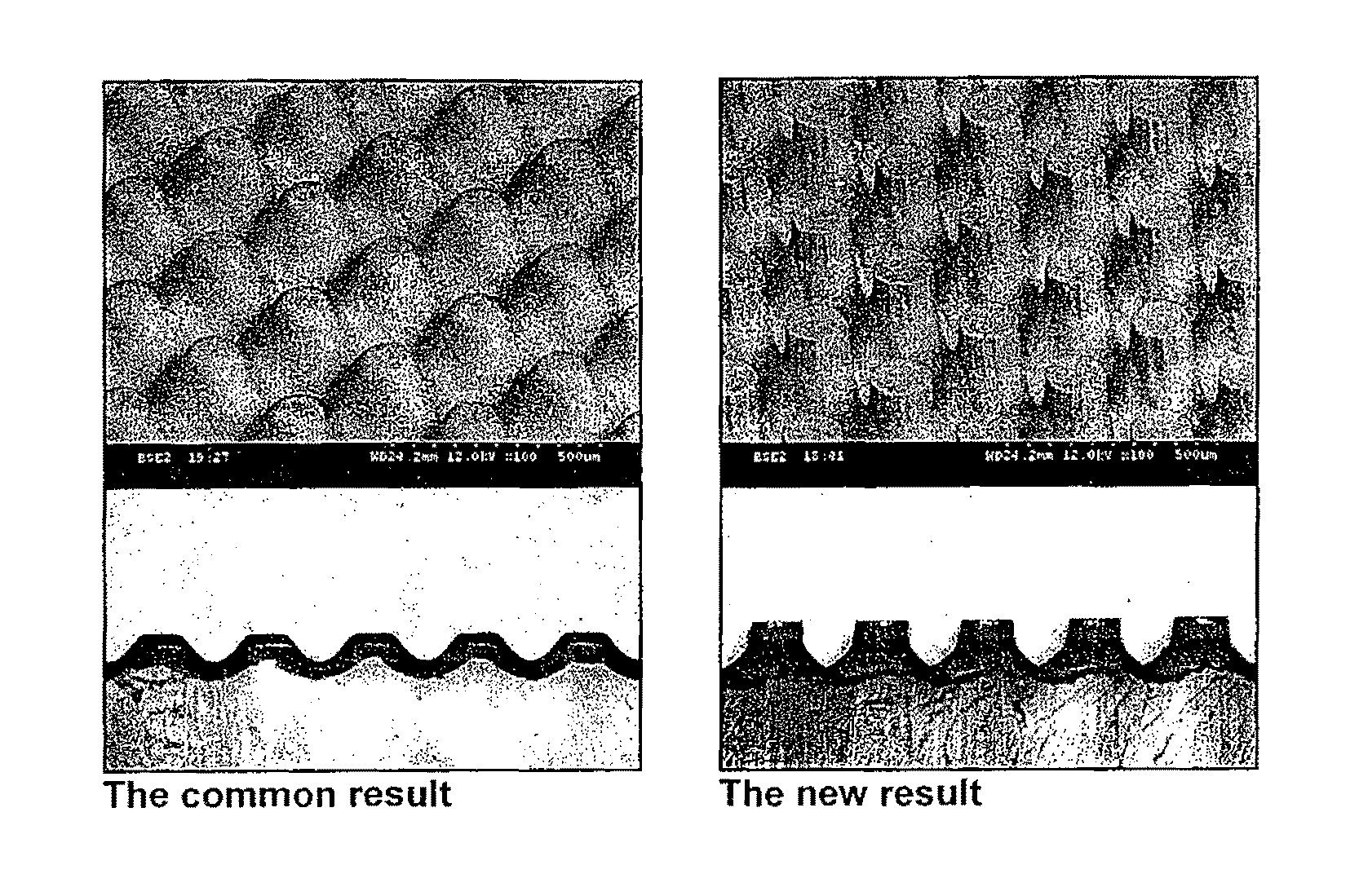Method of improving print performance in flexographic printing plates
a printing plate and flexographic technology, applied in the direction of photosensitive materials, instruments, photomechanical equipment, etc., can solve the problems of affecting the printing performance of corrugated board substrates, affecting the printing effect, and often having slight indentations on the liner layer, etc., and achieve good results
- Summary
- Abstract
- Description
- Claims
- Application Information
AI Technical Summary
Benefits of technology
Problems solved by technology
Method used
Image
Examples
Embodiment Construction
[0034]The inventors of the present invention have found that the shape and structure of a printing dot has a profound impact on the way it prints. Knowing this, one can manipulate the resultant shape of the printing dots by the methods as described herein. The use of these methods also acts to reduce the fluting tendency.
[0035]In order to reduce print fluting when printing on corrugated board substrates, the inventors of the present invention have found that it is necessary to (1) remove air from the exposure step; and preferably (2) alter the type, power and incident angle of illumination.
[0036]The use of these methods together yields a dot shape that is highly resistant to print fluting and shows exceptional impression latitude on press (i.e., resistance to print gain changes when more pressure is applied to the plate during printing).
[0037]The inventors herein have discovered that the most important method of beneficially changing the shape of printing dots formed on a printing e...
PUM
| Property | Measurement | Unit |
|---|---|---|
| surface roughness | aaaaa | aaaaa |
| thickness | aaaaa | aaaaa |
| thickness | aaaaa | aaaaa |
Abstract
Description
Claims
Application Information
 Login to View More
Login to View More - R&D
- Intellectual Property
- Life Sciences
- Materials
- Tech Scout
- Unparalleled Data Quality
- Higher Quality Content
- 60% Fewer Hallucinations
Browse by: Latest US Patents, China's latest patents, Technical Efficacy Thesaurus, Application Domain, Technology Topic, Popular Technical Reports.
© 2025 PatSnap. All rights reserved.Legal|Privacy policy|Modern Slavery Act Transparency Statement|Sitemap|About US| Contact US: help@patsnap.com

